The new year starts out with a bang, offering the chance to spy an exceptionally thin crescent moon shortly after sunset. Here’s how to find it.
The moon’s age is determined by how many hours or days have passed since new moon phase. New moon occurs once a month when the moon lies in nearly the same direction as the sun in the sky. No one can see a new moon because it stays very close to the sun and lost in the glare of daylight.
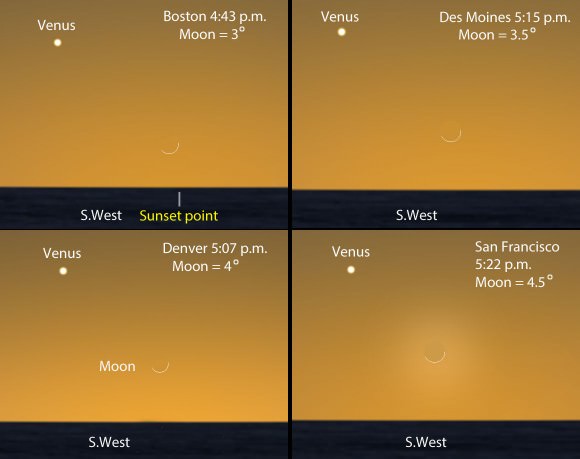
Under favorable circumstances it isn’t too difficult to spot a 1-day-old moon, referred to as a young moon because it’s the first or youngest bit of moon we see after new moon. Young moons are delicate and tucked far down in the twilight glow shortly after sunset. Spotting one fewer than 24 hours old requires planning. You need a flat horizon, haze-free skies and a pair of binoculars. Being on time’s important, too. Be sure to arrive at your observing spot shortly before sundown. Knowing the point on the horizon where the sun sets will guide you to the crescent’s location.
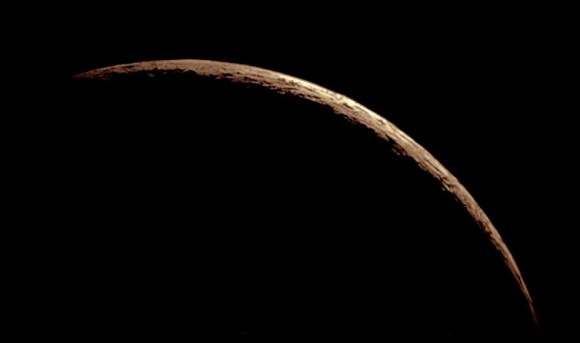
Ready to rock and roll? New moon occurred at 5:14 a.m. (CST) today. For the U.S. Midwest that makes the moon approximately 12 hours old at sunset this evening. Since the moon moves to the east or away from the sun at the rate of one moon-diameter per hour, skywatchers in the western U.S. will have it somewhat easier shot at seeing it. In Denver, the moon will be 13 hours old, while in San Francisco it will have aged to 14 hours. Hawaii residents will have their shot at a 16-hour-old moon, still very young but farther yet from the sun and easier to see. To know exactly when the sun and moon set for your city, click HERE.
Luckily you’ll have more than just the sunset point to help know in which direction to look; Venus, itself a very thin crescent moon at the moment, hovers 7-8 degrees to the upper left of the moon. You should have no problem seeing a crescent Venus in binoculars.
The record for youngest moon spotted with the naked eye goes to writer and amateur astronomer Steven James O’Meara, who nabbed a 15 hour 32 minute crescent in May 1990. The skinniest moon ever seen with optical aid goes to Mohsen G. Mirsaeed of Tehran on September 7, 2002 at just 11 hours 40 minutes past new.
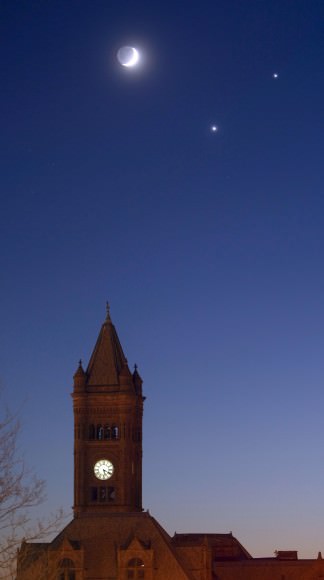
Based on these facts, it’s likely few will see the faint arc of moon with the naked eye especially in the eastern U.S. where the crescent will be only 11 hours old. Binoculars and telescopes will be required for most of us. To meet tonight’s challenge, make sure your binoculars are focused at infinity before you start. Again, Venus comes to our aid. Carefully focus the planet until you see its crescent as sharply as possible. You can also focus on any clouds that might be present. Lacking that, aim for the most distant object in the landscape. Focus is critical. If you’re off, the thin moon will soften, spread out and appear even fainter.
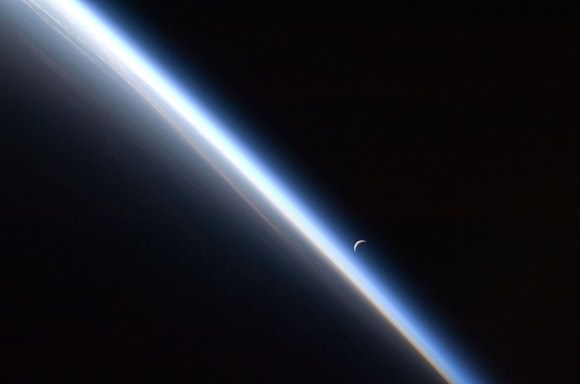
Start looking for the moon about 10 minutes after sundown in nearly the same direction as the sunset point within a strip of sky as wide as a typical binocular field of view or about 5 degrees. Slowly scan up and down and back and forth over the next 25 minutes looking for a wispy sliver of light against the deepening blue sky. Should you find the moon, you might be surprised at the broken appearance of the arc. These seeming breaks are caused by oblique lighting on crater walls and mountain peaks creating shadows long enough to bite into and hide portions of the moon’s sunlit edge.
I wish you the best in your search tonight for what could be one of the rarest astronomical sightings of your life. It won’t be easy. Whether you succeed or not, please drop us a comment and share your story.

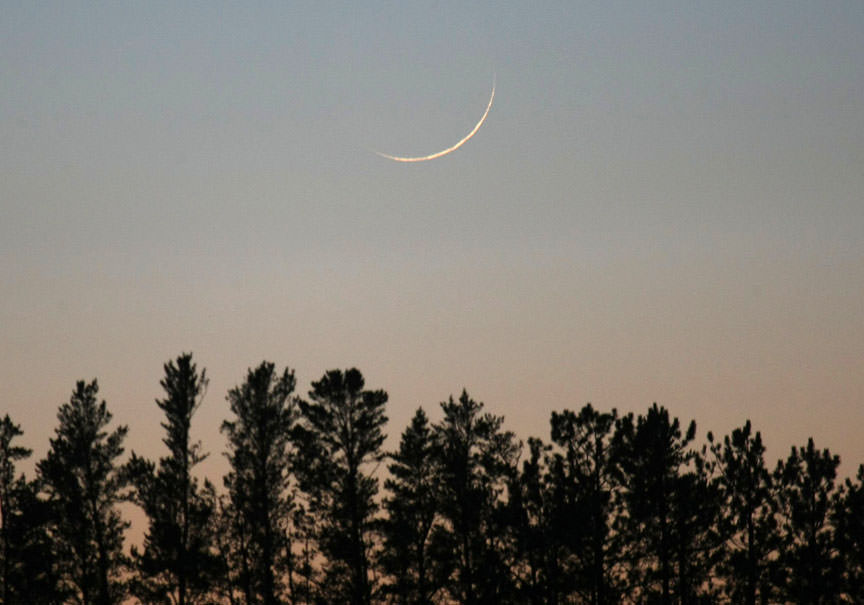
you actually can see a new moon in daylight in the Earths reflection when the conditions are
umm, really? care to elaborate?
I am increasingly frustrated by headlines like this on websites that are for the global community. I and many other readers(not in America) will not see the new moon on this day.Therefore the headline is inaccurate.
Absolutely correct. Eloquently and accurately stated…regards from the southern (and eastern) hemisphere.
Use your common sense.
Get over it
Certainly…with many thanks for your understanding.
while this is a global site, i’m sure a disproportionate percentage of users are from N America, 1st off. Second, even here in N America the East Coast where i live had almost no chance of seeing it. but why should i be annoyed at the post because of that? Should only events that are visible worldwide be included on this site? if that’s the case almost nothing would be included. also, as i read it the headline refers to the possibility of seeing it. not a guarantee. plenty of people in the geaographically possible zone wouldn’t have been able to see it due to cloud cover etc. should they sue universe today over the headline?
I got it from Arizona at 14 hours 46 minutes past new. http://www.flickr.com/photos/halfastro/sets/72157639298787074/
that is AWESOME!!!! having even spotted it. great shots too! did u use optical aid to find it?
I didn’t see it naked eye. I was using 8×42 binoculars. The west was slightly hazy…might have gotten it naked eye if that haze wasn’t there.
well that is great either way. my personal record smallest crescent was 31 hours and 32 minutes prior to new moon, so u have me beat by a bunch! tho that was a naked-eye sighting, so not 100% comparable.
I saw it 5:15 – around 5:25pm, Niceville Florida. Thanks
u mean yesterday not Wednesday right?